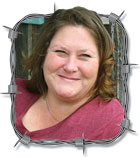My favorite department in Missouri government has always been, and remains, the Missouri Department of Conservation.
The reason is that I have found the conservation employees dedicated to the department’s mission, which is clearly stated in its name. It has been my good fortune as a journalist to work with several of the department’s agents.
Not the least of these was Don Wooldridge, crack photographer. One day he dropped by the office to ask if I was interested in prairie chickens, one of the most endangered of all species of wildlife in the state.
“Of course,” I said. “What are you up to?”
“How would you like to camp out all night and be on their booming grounds when dawn comes? It is an adventure enjoyed by very few people. Prairie chickens were once as numerous as domestic chickens, but now are an endangered species.”
And that is how I found myself in a tent one frosty morning in Osage County, just as the first rays of sun appeared, seeing those rare and endangered birds fly down onto their hallowed “booming grounds,” calling their time-honored “Gung-goo, gung-goo” mating song and dance.
Fifty years have passed and I have never forgotten that frosty morning. I have often wondered how “my” prairie chicken had faired.
Apparently not too well, according to a recent news story. Conservation officials reported they have “imported” 24 hens and 23 chicks to release in hopes of rebuilding the dwindling number or breeding hens on the prairie.
But prairie chickens are not the only game birds that are threatened, have vanished or are vanishing.
Fifty years ago, or less, bobwhite quail were as numerous as sparrows. Our farm, as an example, was home to ten coveys year in and year out. Today there is only one covey on the farm, a number so small that just one bad storm could wipe them out forever.
Ducks and geese used to fly south over the Ozarks by the tens of millions. Many would linger until the dead of winter, a few would even winter in the Ozarks. Many might even hatch here, given a mild winter.
But no more, no more, no more.
What does that tell you about the condition of our environment? Where are the cottontail rabbits? Once they were so numerous they were a pest. Today, they are a rare sight.
And it was only ten years ago that I saw my first armadillos in the Ozarks. Now, even they are gone, or else so few in numbers they hardly appear.
Once, in a “blue moon” I will spot a mother possum. Once it was a common sight to see a mother possum, her belly pouch stuffed with her prehistoric brood that was so awe-inspiring.
Skunks? Even they are a rare and welcome sight – so long as they are not molested and caused to eject one of the most horrendous odors known to mankind. But they are a natural part of our environment, and even their death is noticed.
Noticing their seemingly harmless changes in our environment, it is easy to shrug and say, “What difference does it make? They are only critters, only bothersome things that have nothing to do with our environment.”
True, very true. But what if? What if their demise is only the harbinger of things more serious looming up behind us, things too late to notice and too late to reverse their decline, a part of that rolling stone that cannot be reversed until a midget becomes a full-blown crisis, one so deep and dangerous to man’s lives it cannot be reversed in time?
Am I just a fraidy-cat? Just a fear-monger? Maybe so. Maybe so to Al Gore, too.
Somehow these mental wanderings remind me of a science fiction short-story I wrote once upon a time.
The thrust of this story was that mankind stressed his environment so greatly that Earth was doomed. The only salvation was save the best and last of the population’s embryos, lock them away in liquid oxygen for transport to a new planet in outer space, eons away from Earth’s orbit, there eventually to find a home on a new planet in another far away galaxy.
The new planet was to be populated by the hatching of the first of the embryos and his mate.
Sound familiar? Could their name be Adam and Eve? In my story the name was Peter Savach.
Ah, surely not.
I hope you have a good day and don’t let the meandering of an old cowhand and story writer interfere with your next good night’s sleep.
Meanwhile, back to reality. I sincerely hope Missouri conservationists can save the last of our prairie chickens and other forms of wildlife. If they cannot survive, what does that tell us about the survival of the human race?
Peace.






